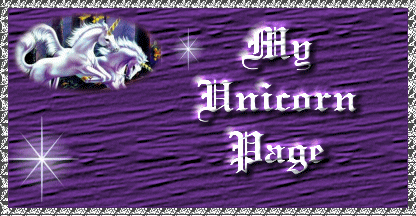One of the most appealing legendary animals is the unicorn. It is a white horse, with the legs of an antelope, and a spirally grooved horn projecting forward from the center of its forehead. The horn is white at the base, black in the middle, and red at the tip.
The earliest reference to the unicorn is found in the writings of Ctesias. He was a Greek historian, at one time physician to the Persian king Artaxerxes II. Ctesias returned from Persia in about the year 400 BC and wrote a book on the marvels of the Far East. He told of a certain wild ass in India with a white body and a horn on the forehead. The dust filed from this horn, he said, was a protection against deadly drugs. His description was probably a mixture of reports of the Indian rhinoceros, an antelope of some sort, and the tales of travelers.
In early versions of the Old Testament, the Hebrew word re'em, now translated as "wild ox," was translated "monocros," meaning "one horn." This became "unicorn" in English. By the Middle Ages this white animal had become a symbol of love and purity. It could be subdued only by a gentle maiden. The story of 'The Lady and the Unicorn' was a theme in the finest of medieval tapestries. In church art the unicorn is associated with the lamb and the dove. It also appears in heraldry.
The connection between the unicorn and the rhinoceros may be traced through the reputation of the powdered horn as a potent drug. Drinking beakers made of rhinoceros horn, common in medieval times, were decorated with the three colors described by Ctesias. As late as the 18th century, rhinoceros horn was used to detect poison in the food of royalty. In Arabian and other Eastern countries, the horn is still believed to have medicinal powers. (See also Pegasus; Sphinx.)
---------------------------------------------------------
From Compton's Interactive Encyclopedia Deluxe © 1999 The Learning Company, Inc.

